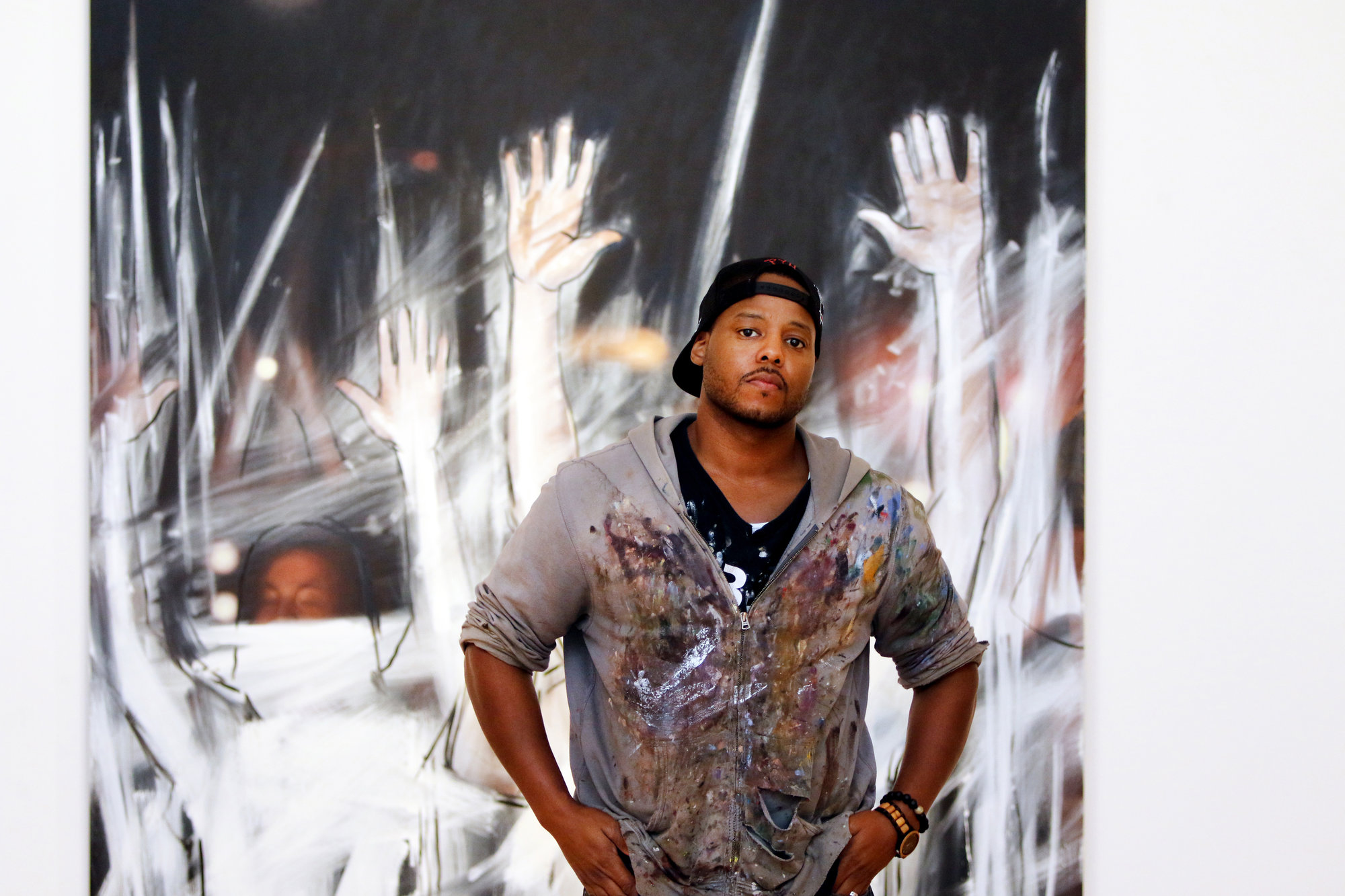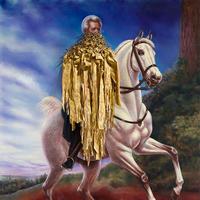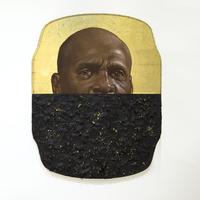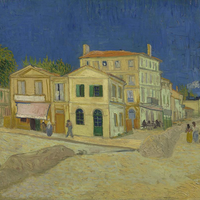More about Titus Kaphar
Works by Titus Kaphar

Sr. Contributor
Titus Kaphar realized that there weren’t many people asking questions about representation in art and art history, so he started asking them himself.
This strategy has been paying off. Over the past fifteen years, Kaphar’s work has been getting noticed in a big way. He belongs to the cache of prestigious Yale School of Art MFA graduates, like Mickalene Thomas and Kehinde Wiley, who use their practices to change how we think about who has been either included or excluded as makers and subjects of art.
Despite the role of art history in Kaphar’s own art, he didn’t grow up going to museums. He began taking art history classes as a teenager to impress a girl – who is now his wife – after she criticized him for not preparing for his future. Luckily, this happy accident launched a career that ultimately landed him a MacArthur “Genius” grant in 2018.
Kaphar taught himself how to paint by visiting museums, and he developed a unique practice by looking at images that perpetuate a white narrative of history. He mercilessly forces us to confront the uncomfortable histories that frame the American experience. Much like Wiley, Kaphar remixes historic paintings and sculptures to highlight the stories that the white construction of history has omitted, like the complicated and problematic relationship between Thomas Jefferson and his slaves.
During a 2017 TED Talk, he covered a replica Frans Hals work with white paint to highlight the black slave who otherwise recedes into the background, both visually and historically speaking in textbook explanations of the painting. He makes us painfully aware that scholars have written more about the symbolism of dogs in paintings and the production of lace during this particular era than about the black character in the painting. The crossing-out recalls what Basquiat did in works like Hollywood Africans. He named the painting Shifting the Gaze, and it is now in the collection of the Brooklyn Museum.
Kaphar is also interested in the ways in which criminal justice issues contribute to contemporary history and utilizes his art as a springboard to explore the topic. When the Ferguson protestors were named as a runner-up to TIME’s Person of the Year in 2014, Time magazine commissioned Kaphar to paint a work commemorating the protestors’ response to the fatal shooting of eighteen-year-old Michael Brown by police officer Darren Wilson in Ferguson, Missouri. Keep your eyes peeled for what else Kaphar has in store. He’s nowhere near done shifting our gaze.
Sources
- Brooklyn Museum. “Shifting the Gaze.” Collection. https://www.brooklynmuseum.org/opencollection/objects/224267. Accessed March 4, 2019.
- MASS MoCA. “Titus Kaphar: Language of the Forgotten.” Events. https://massmoca.org/event/titus-kaphar/. Accessed March 4, 2019.
- TED. “Titus Kaphar: Can art amend history?” TED2017. April 2017. https://www.ted.com/talks/titus_kaphar_can_art_amend_history. Accessed March 4, 2019.
- TIME Staff. “Behind Titus Kaphar’s Ferguson Protest Painting.” TIME Person of the Year. December 10, 2014. http://time.com/time-person-of-the-year-ferguson-painting/. Accessed March 4, 2019.
- Titus Kaphar. “Titus Kaphar Bio.” https://kapharstudio.com/about/. Accessed March 4, 2019.
Featured Content
Here is what Wikipedia says about Titus Kaphar
Titus Kaphar is an American contemporary painter whose work reconfigures and regenerates art history to include the African-American subject. His paintings are held in the collections of Museum of Modern Art, Brooklyn Museum, Yale University Art Gallery, New Britain Museum of American Art, Seattle Art Museum, Virginia Museum of Fine Arts, and University of Michigan Museum of Art.
Check out the full Wikipedia article about Titus Kaphar













